Wine Enthusiast |
- A Guide to Armenia, One of the World’s Oldest Wine Regions
- Underrepresented Regions and Communities Rule these Six Restaurants Wine Lists
- ‘Drink Less, But Better’: Actor Sam Neill on Winemaking and What’s Next
| A Guide to Armenia, One of the World’s Oldest Wine Regions Posted: 19 Jul 2021 05:00 AM PDT  Landlocked between Georgia, Iran, Azerbaijan and Turkey, Armenia’s fast-flowing rivers and high plateaus are framed by the rugged Caucasus Mountains. Early civilizations, ancient kingdoms and a communist state have all lived in what's considered the cradle of wine. Through triumphs and tumult, the country's wine industry is again on the rebound. Here's what you need to know about Armenia's vinous renaissance. Ancient HistoryRegardless of whether Noah truly planted Armenia's first vineyard after his Ark washed up on Mount Ararat, the country's wine history is ancient. The region of Vayots Dzor claims to be home to the oldest winery in the world, in operation some 6,100 years ago. Discovered in 2007, the Areni-1 cave complex held evidence of large-scale wine production and the likely domestication of vines. Some think wine consumption reaches back even further. Patrick McGovern, scientific director of biomolecular archaeology project for cuisine, fermented beverages and health at the University of Pennsylvania Museum, found traces of wine on an 8,000-year-old Stone Age shard of pottery retrieved on a modern-day Georgian site.  While exact details of ancient winemaking remain romantically murky, ancient texts authenticated by historians like McGovern offer a glimpse of Armenia's ancestral glory. In his book Ancient Wine, McGovern details how 8th century B.C. Urartian monarchs, an Iron Age kingdom that ruled the Armenian Highlands, dubbed Armenia "the land of the vineyards." The Assyrians and Greeks also referenced Armenian wine in various texts. The progression of Armenian wine ended when the Soviet Red Army invaded in 1920. Two years later, the country was merged into the Transcaucasian Soviet Federated Socialist Republic. In 1936, it became the Armenian Soviet Socialist Republic, or Soviet Armenia. With the abolition of private enterprise, innovation came to a halt. The Soviets converted wineries into processing plants, and vineyards turned over fruit for brandy distillation or bulk wine production. To increase volume, vineyards were planted in unfavorable locations, while others went neglected or abandoned. The wines once coveted by Assyrian rulers and traded with the Babylonian empire fell from grace. In 1991, after the dissolution of the Soviet Union, Armenia regained its sovereignty. Young Armenians and those with investment money began to embrace the region's ancient techniques and storied wine culture. In other words, Armenia has the distinction of being the youngest oldest wine industry in the world. 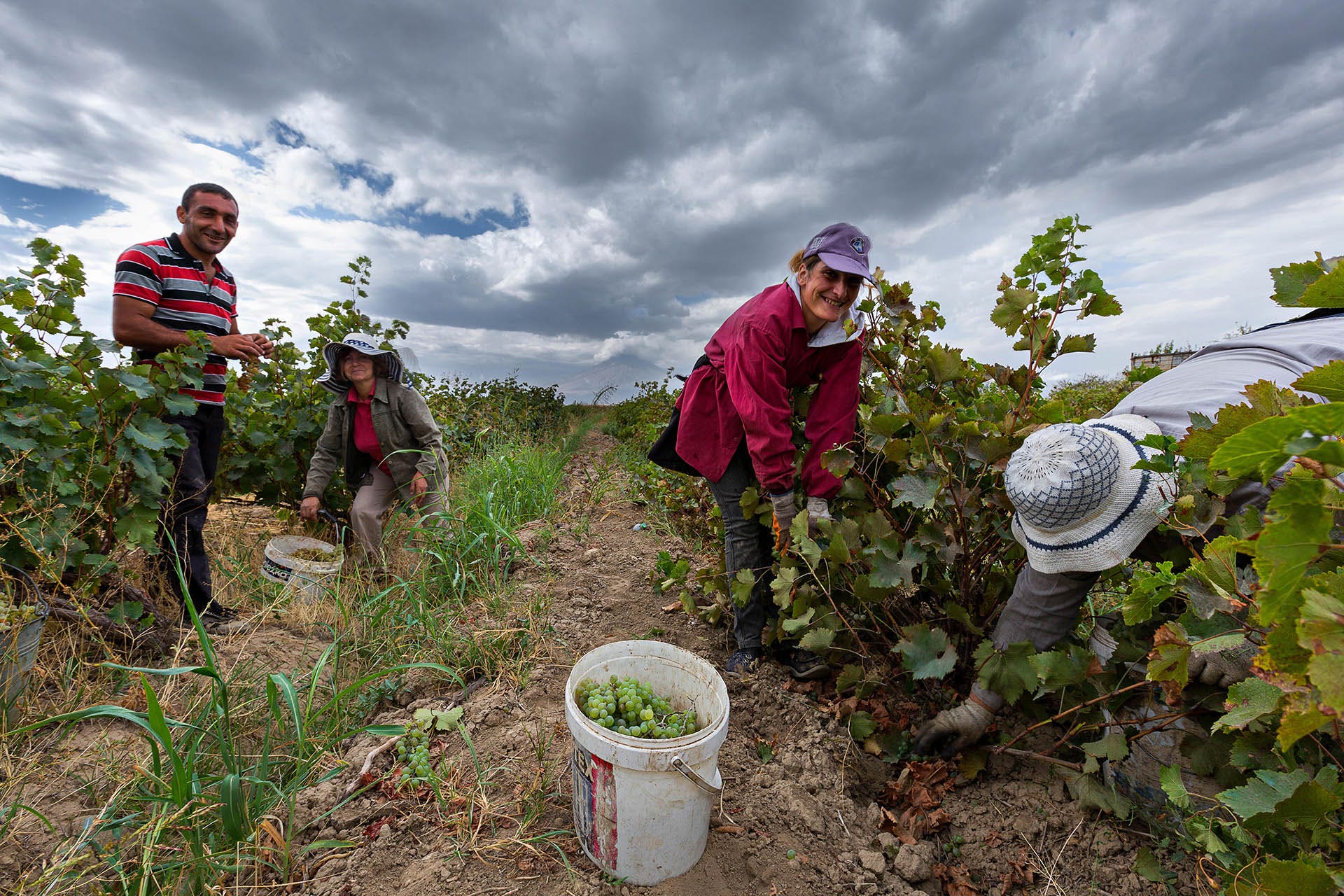 The Grapes to KnowSo far, researchers have catalogued 400 indigenous varieties from a cache of wild vines cultivated by early Armenians. A few producers work with international grapes, largely for Russia and other former Soviet republics. This market will diminish over the coming years, says Ara Sarkissian, head of wine for Storica Wines, a U.S.-based Armenian wine import company. Rather, new quality-driven wineries focus on local varieties. However, to commit to Armenia's heritage grapes is not as easy as planting them. "A lot was lost during the Soviet years, including knowledge of the traits of many indigenous varieties that were ignored during that era," says Sarkissian. Determining characteristics like soil suitability, sun preference, vineyard aspect as well as how much maceration and aging the grapes can handle, takes year of experimentation, a process underway in earnest over the last decade. "Unlike neighboring Georgia, where tradition looms over everything, Armenians are open to imported knowledge and technology," says Sarkissian. "The break with the past of the Soviet era, as devastating as it is in terms of losing tradition, has also been an opportunity for a fundamental reset, which drives much of the renaissance that's happening now." For example, Armenians have shown flexibility with grape names that outsiders find difficult to pronounce. "Khndoghni has been renamed Sireni by near unanimous consent," says Sarkissian. Areni Noir produces medium-bodied reds with fruits like cherry and strawberry laced with black pepper aromas. It compares in its freshness, silkiness and transparency to Pinot Noir. Voskehat is Armenia's signature white grape. Translating to "golden berry," the wine has light to medium body. It brims with floral and stone fruit aromas marked by notes of herbs and citrus. Khndoghni, or Sireni, is a red grape common to the region of Artsakh that gives black fruit flavors, deep color, good tannins and the potential to age. Key Wine Regions Armenia's viticultural strengths include volcanic soils, high-elevation sites and old vines. The absence of vineyard pest phylloxera permits growers to plant vines on their own roots, rather than be grafted. "This means our grapes have been kept close to their original forms," says Varuzhan Mouradian, founder/winemaker of Van Ardi Winery in the region of Ashtarak, just outside of capital city Yerevan. "As someone who's used to hearing 'pre-phylloxera' in conversation, it's wild to listen to Armenian winemakers demarcate their vineyards as pre- or post-Soviet," says Chris Poldoian, an American sommelier of Armenian descent, who also serves as an ambassador for Storica Wines. There are four main wine regions. The best known is the south-central region of Vayots Dzor, a long, narrow plateau which stands out for its highest elevation vineyards, some which reach almost 6,000 feet above sea level. "To put things in perspective, high elevation in continental Spain and Northern Italy is maybe 2,300 to 2,900 feet," says Poldoian. Aragatsotn sits at slightly lower elevation. Other regions to note include Ararat, located on a sunny plateau; Armavir, a mountainous area in the southwest; and Artsakh, on the border with Azerbaijan, where Sireni grows. "Within the regions, villages and hillsides are being explored, and winemakers are learning the characteristics of single vineyards," says Sarkissian. 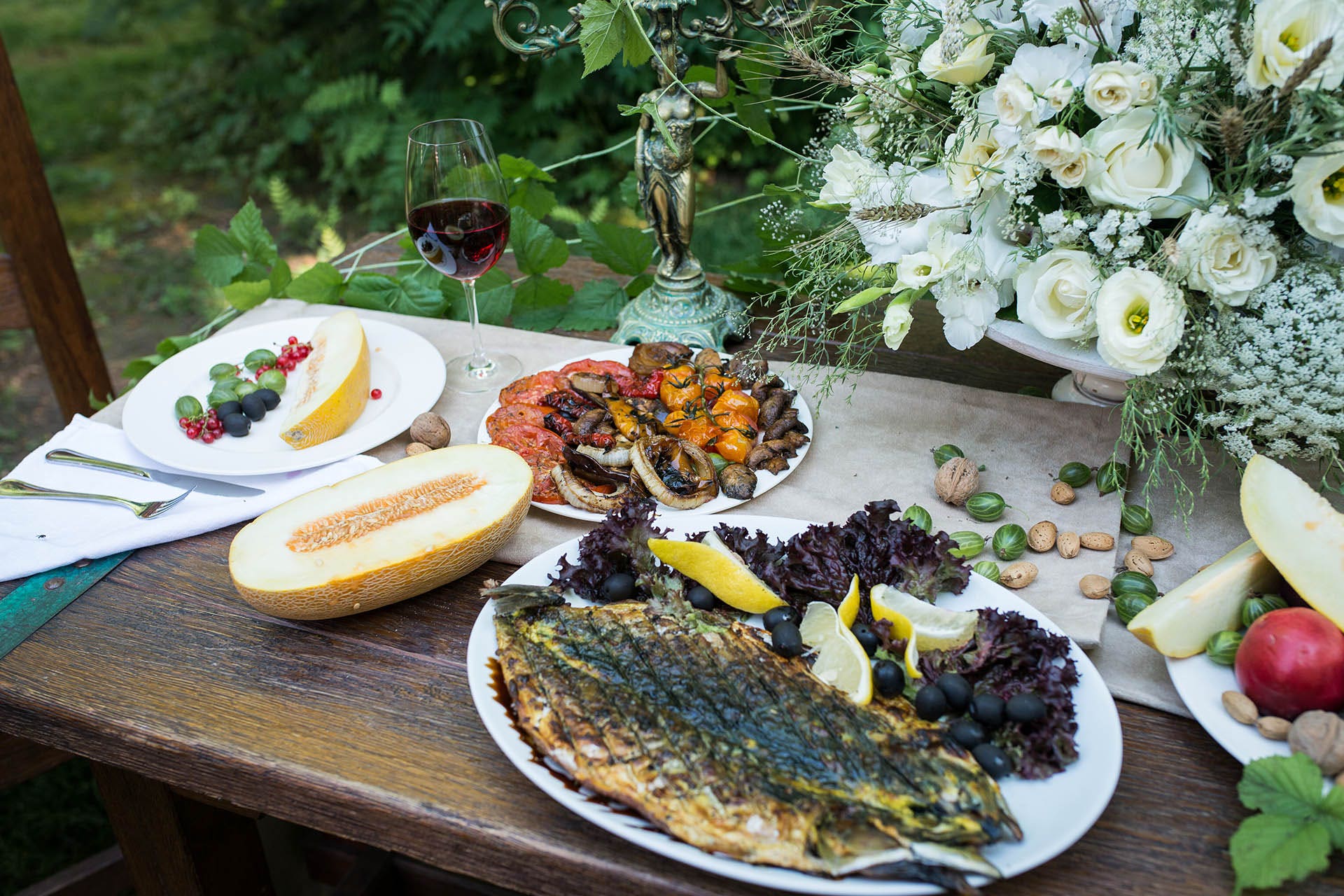 The Modern IndustryIt's natural to be drawn to the history of Armenian viticulture because it's the origin story of human wine consumption. Poldoian, however, hesitates to focus on the ancestry of Armenia. He'd rather highlight the "amazing wines made by thoughtful producers right now." Armenians have driven much of the revival using a combination of modern technology and traditional techniques, like aging in terracotta jars called karasi. The collective push for quality has helped winemakers find export partners. Vahe Keushguerian, founder/winemaker for Keush and Zulal, says as a landlocked country, "Armenia cannot produce low-cost wines. It has to carve a niche in a higher-priced segment." So far, the best-known winery is Zorah. Founder Zorik Gharibian, a successful businessman in the Italian fashion space, pivoted from breaking ground on a winery in Tuscany to Armenia after he visited his ancestral homeland in 1998. Zorah's Areni, matured in karasi, fit neatly into the trending category of amphorae-aged wines, which helps turn the spotlight on Armenia. Since Zorah's founding, the list of imaginative wineries has grown. Storica imports four of them: Keush, for traditional-method sparklers; Zulal for vibrant Areni, Oshen for barrel-aged wines and a rosé from Shofer. Hin Areni and ArmAs Estate also export to the U.S. International attention doesn't hurt. Paul Hobbs, the California vintner who has spread his wings to Argentina, the Finger Lakes region of New York and Europe, developed a fervor for Armenia during a trip in 2005. His latest project, now a partnership with Viken Yacoubian called Yacoubian-Hobbs, broke ground near Areni-1 in 2014. Its wines, a white blend and two Arenis, can be purchased online, making them more accessible for U.S consumers. American sommeliers have taken notice. "As the birthplace of viticulture, Armenian wines are liquid history," says Kyla Cox, Atlanta-based wine consultant and founder of Cork Camp. "These wines reflect a sense of culture and place perhaps more than any other winemaking region." She frequently showcases the wines in her events. Small growers in remote regions, however, lack the money, infrastructure or logistics to capitalize on such enthusiasm. The Farm-to-Bottle project by ONEArmenia has worked to bring the consumer to the farmer. A crowdfunding campaign run in 2017 helped build the first "WineCube," a cabin-like tasting room in Southern Armenia for Momik Wines. Despite numerous challenges, the mood in Armenia remains optimistic. "Armenia is small, landlocked and poor," says Mouradian. "But what it has is resilience, an ability to adapt, and an eagerness to show the world its world-class wines. A bright future lies ahead for Armenian wine." |
| Underrepresented Regions and Communities Rule these Six Restaurants Wine Lists Posted: 19 Jul 2021 04:30 AM PDT  Some restaurants pride themselves on expansive, encyclopedic wine lists, while others opt to specialize. Such laser-focused lists might highlight a geographic area, or bottles made by underrepresented communities. Each offer wine lovers and newbies alike the chance to dive deep into a region or style. Here are six standout, single-focus wine lists at restaurants nationwide. Balkans WineKafana, New York City The wines at this Manhattan Serbian restaurant hail almost exclusively from the countries of the former Yugoslavia: Slovenia, Croatia, Serbia, Bosnia & Herzegovina, North Macedonia and Montenegro. The list includes heavy hitters from the region, like Slovenia's Movia, Miloš from Croatia and Zvonko Bogdan from Serbia. Other standouts include the Kremen Kamen Cabernet Sauvignon from winemaker Nikola Mladenovic Matalj in Serbia, the crisp white Graševina from celebrated Croatian winery Enjingi, and a barrel-aged Vranac from Montenegro's Plantaže. The selection of Slovenian and northeastern Italian orange wines from the likes of Clai, Gravner, Kabaj, Dario Prinčič and more is not just a study in the changing borders of the region, but also a potential master class in Old World natural wines beyond Georgia. German-Accented WineFunkenhausen, Chicago According to Joseph Carnahan, the general manager/wine director of this West Town beer hall, this is one of the only places in Chicago to serve Roter Veltliner, an indigenous Austrian white grape. The list focuses on grapes and bottlings from German-speaking countries and regions, featuring Cabernet Dorio, Gemischter Satz and an array of Rieslings. For those interested in expanding their German-accented wine knowledge, Carnahan often lists two dissimilar versions made from the same grape to showcase their versatility. Mexican WineBar Sótano, ChicagoSleek Bar Sótano's abbreviated menu of tacos, seafood and Mexican-style bar food is complemented by an even more curated selection of the country's wines. The only white wine on the list, a 2019 Manaz Blanco from Casa Magoni Winery in Valle de Guadalupe, is a blend of Viognier and Fiano. Red wines include a 2017 Paoloni Cabernet-Merlot blend and a 2016 Nebbiolo from Topolovino Baja, both also from Valle de Guadalupe. Rosé lovers can pair their Sótano Burger or Huitlacoche Sopes with a glass of Tacha, a Grenache rosé from Aborigen Winery in the Ojos Negros Valley. The list may be small, but it's a huge celebration of Mexican wine. Women-led WineriesDirt Candy, New York City Dirt Candy only serves bottles from women-led wineries, where the owners, vineyard managers or winemakers all identify as female. "Another way of looking at it is that we choose to serve wines from the best wineries we can find, and lucky for us that a lot of them are run by women," says Michael Cherry, the beverage director. Dirt Candy's list changes frequently. "There are so many women winemakers to be excited about," says Cherry. "Martha Stoumen and Brianne Day regularly appear on our list, alongside Megan Bell from Margins Wine, Elisabetta Foradori, Valerie Tissot, Sybille Kuntz and Claire Naudin. There are women making delicious wines in every appellation." Washington State WineThe Marcus Whitman Hotel, Walla Walla, WAWhen it comes to West Coast wines, California and Oregon bottlings often steal the spotlight. But this Walla Walla hotel highlights what Washington State, the third-largest wine producer in the country, has to offer. Two signature white wines, a barrel-fermented Chardonnay and Bordeaux-style blend, were made for the hotel's restaurant and its Vineyard Lounge by winemaker Marty Clubb of Columbia Valley's L'Ecole No 41. Other Evergreen State wineries on the menu include Poet's Leap, Dusted Valley and Lodmell Cellars from Columbia Valley. The Walla Walla Valley is represented by the likes of Pepper Bridge Winery, Lagana Cellars and Tertulia Cellars. Republic of Georgia WinesSupra, Washington, D.C.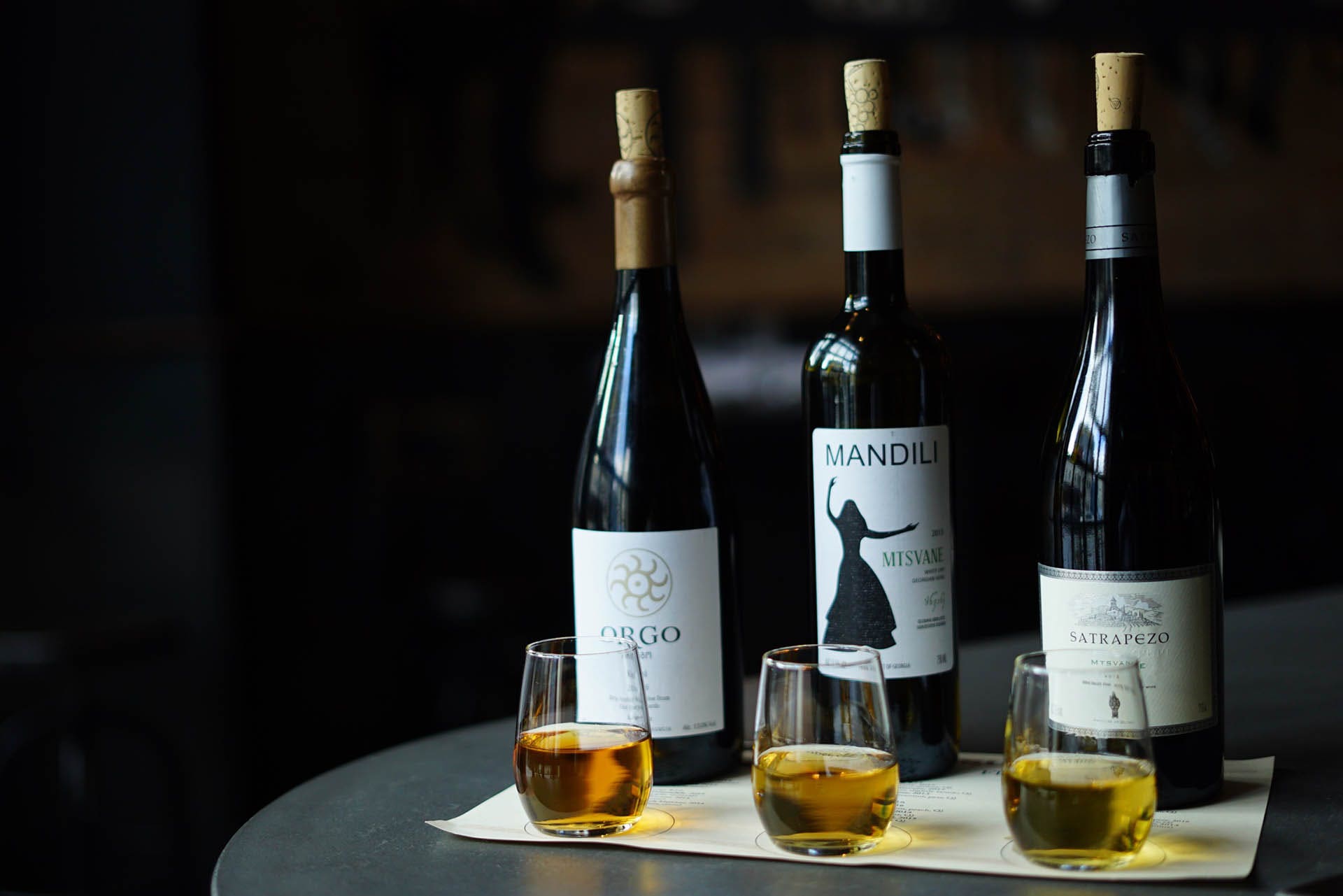 In 2017, when Jonathan & Laura Nelm prepared to open Supra, "we got a lot of advice about not concentrating too much on Georgian wine," says Jonathan. Luckily, they chose to ignore it and built a wine list that celebrates the country's 8,000-year-old winemaking history. Supra's qveri-aged "amber wine" selections include Shumi Winery, Shaulari Cellars and Dakishvili Family Vineyards. There's also multiple expressions of Georgia's Rkatsiteli and Saperavi grapes. The Nelms and their team "love using the wines and the food to introduce people to Georgia in general," says Jonathan. "Most of our guests are aware that there is such a country, but there are still a lot of people who know next to nothing about the country and its culture. The wine is an eye-opening and delicious and fun way to start that conversation." |
| ‘Drink Less, But Better’: Actor Sam Neill on Winemaking and What’s Next Posted: 19 Jul 2021 04:00 AM PDT  Though movie fans may know him for blockbusters like Jurassic Park or indie flicks like Hunt for the Wilderpeople, Sam Neill's reputation in the wine world hangs on Pinot Noir. In 1993, he established Two Paddocks winery in Central Otago, New Zealand. Since then, the estate has earned accolades for vibrant, transparent Pinots produced from four distinct vineyards. We last chatted with Neill back in 2008. With Jurassic World: Dominion now on the horizon, we decided to check in again—this time, via Zoom from his quarantine hotel room in Auckland, New Zealand—to learn more about how 2020's events altered his perspective on wine and why natural wine can be interesting. Have the pandemic and various quarantines changed your perspective on wine? I've been encouraging people to drink less, but better. To really get interested in what's in the glass, who grew it, what it's about… When you're locked down and putting up with your own company…you might as well be mindful of what you're doing. What was it like to film Jurassic World during a pandemic? That was an unusual experience and one of the toughest I've ever had. We were locked up for effectively four to five months, tested every day for 10 days when we arrived, and three times a week after. Someone estimated they spent $5 million just on Covid-19 precautions.
You've gushed openly about the magic of Central Otago. Do you feel the same now? Someone once said, "You can love many places in the world, but you can only be in love with one." The only place in the world I'm in love with is Central Otago. I get off the plane, and within an hour, I feel completely at home. You recently produced a small amount of Pinot Noir naturally, without intervention or preservatives like sulfur. Did you find much difference between that and the Pinot you make conventionally? We made two small batches from exactly the same plot: the Fusilier Vineyard in Bannockburn. One was a natural wine, and one was classic. It was really interesting, the results, because they were completely different wines. They could have been from a different vineyard altogether, but they were from exactly the same grapes. Did the pandemic disrupt vineyard and cellar work for you? When harvest hit, it was full-on pandemic, but the government made an exception for the wine industry with very strict protocols in place. Everyone got a dedicated bucket, a dedicated set of secateurs, and people had to keep about 6.5 feet apart all day. We estimate that every vine is visited by a pair of hands 14–15 times a year. It's time consuming and repetitive work, from leaf plucking to harvest, so it helps when you're all in it together. To be separate and doing it isn't so much fun. What's your vision for the winery in the next five or 10 years? Well, all four vineyards were certified organic in 2017. It's becoming more important to people, and it certainly is to us. There was one vineyard that was problematic that we had to farm conventionally for a while, but we eventually decided everything had to be organic. It's time consuming and expensive, but I couldn't in all conscience live with myself if we weren't farming organically and sustainably. How do you feel about natural wine, or wine that's made without anything added or taken away? We got interested in natural wine, which I laugh a bit about, but there's demand for it. We make a small amount for our wine club members… I don't really approve of it, to be honest. How long has mankind been making wine? I suppose it's 10,000 years or something? And one of the great breakthroughs happened about 3,000 years ago when they started putting in a little bit of sulfur from Mt. Etna in Sicily. They discovered wine could have a life, rather than be a home brew, so why we're reverting to something your grandad made in his garage. I don't really know. What can you tell us about Last Chance, the beautiful windswept vineyard at the end of the world? If I had to pick one of my vineyards, that would be the one. There are extraordinary, weathered rocks that look like ancient creatures, and green vines growing below them. It has fabulous views looking north into the sun. It seems an unlikely place for a vineyard initially, but it has the full intensity of that Central Otago sun that's like nowhere else. It's a bit windier than elsewhere, so it produces tough, small berries and small bunches. Alexandra, the subregion, was always overlooked, but I think we make some of the most interesting, elegant, restrained wines from there. We hold back Last Chance an extra year. It is the slowest to come forward because of these lovely tannins. Next year, we'll release the 2018. What's distinct about this wine? How would you recognize it when tasting it blind? It's got lovely savory qualities. It's the most savory of our wines. It's surrounded by wild thyme. Thyme even grows between the rows. I've always thought that partly accounts for its profile. It also has a subtlety and a kind of reticence that calls for attention, which is exactly what I've been talking about, that mindfulness that you need to appreciate Pinot Noir. |
| You are subscribed to email updates from Wine Enthusiast. To stop receiving these emails, you may unsubscribe now. | Email delivery powered by Google |
| Google, 1600 Amphitheatre Parkway, Mountain View, CA 94043, United States | |

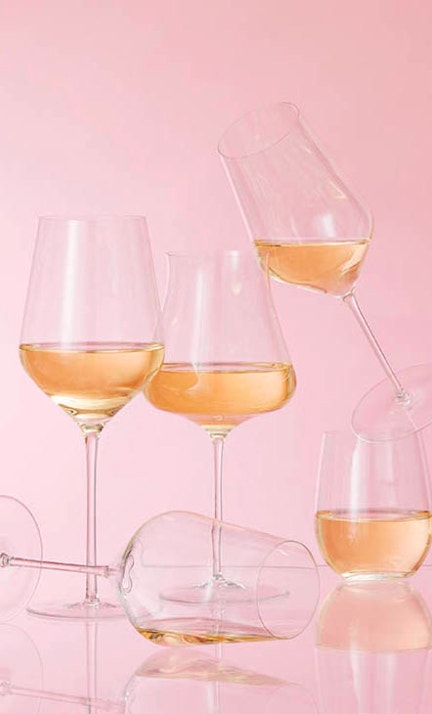
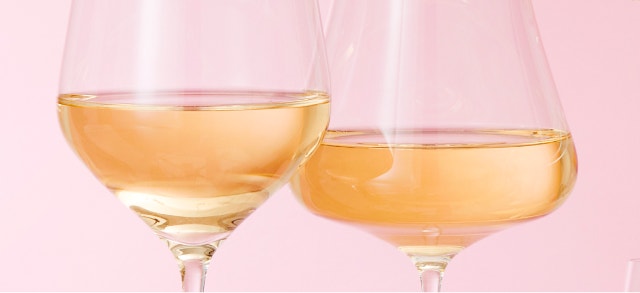














0 comments:
Post a Comment